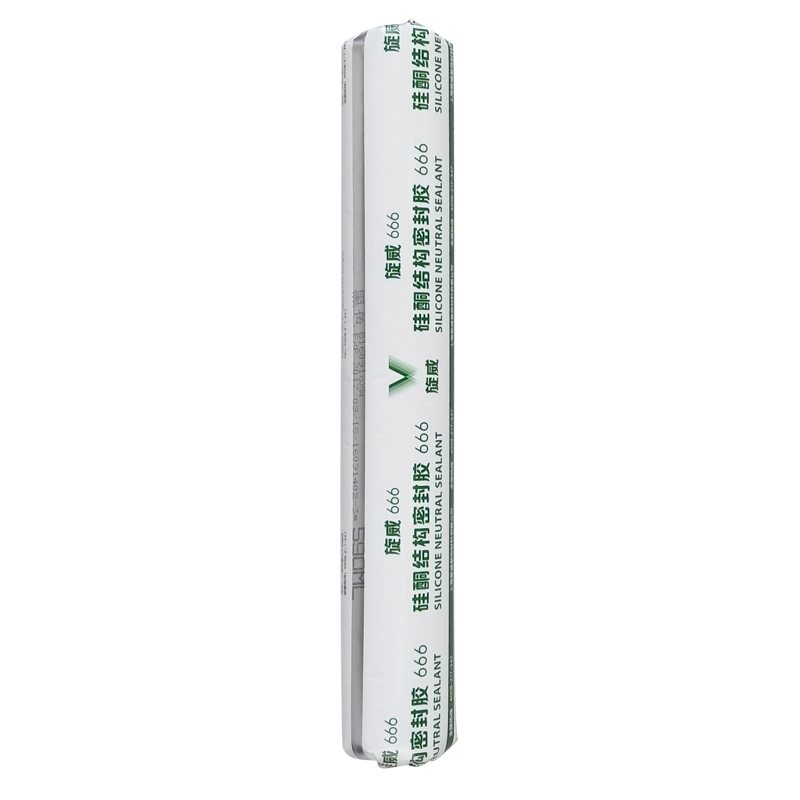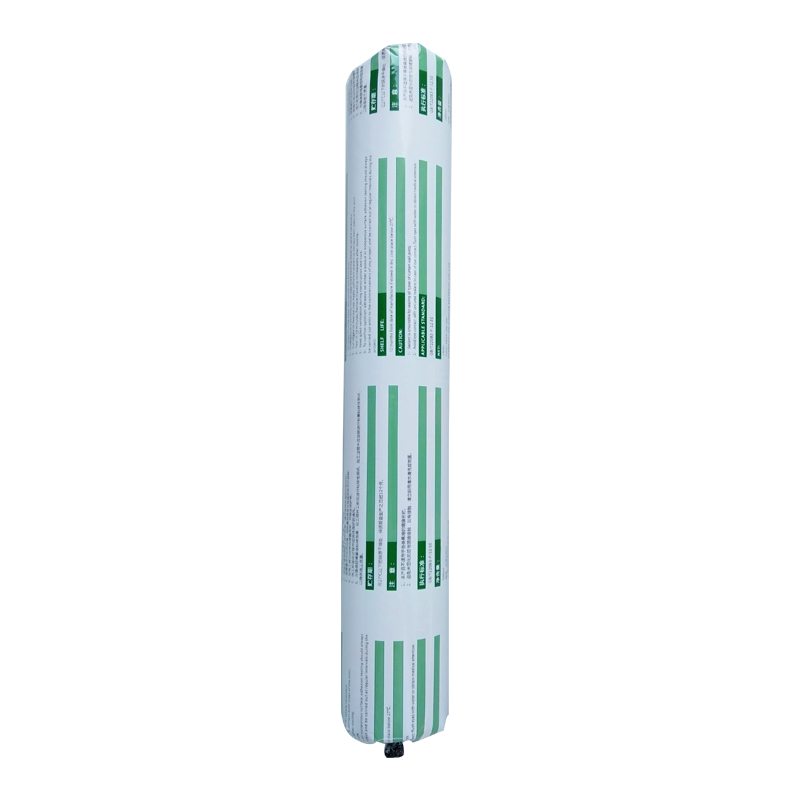Special Price for SV-666 General Use Neutral Sealant to Zimbabwe Importers
Short Description:
Description SV-666 neutral silicone sealant is a neutral curing glue single component, the modulus of the. It is specially designed for windows and doors caulking sealing general plastic doors and windows. It has good adhesion to glass and aluminum alloy, and has no corrosion. Where to use It is fit for multiple purpose sealing and bonding applications to form a silicone rubber adhering to adjacent substrates e.g. glass, ceramic, tile, wood and metal. Key Features 1. 100% silicone 2. Eas...
Well-run equipment, professional sales team, and better after-sales services; We are also a unified big family, everyone stick to the company value "unification, dedication, tolerance" for Special Price for SV-666 General Use Neutral Sealant to Zimbabwe Importers, To learn more about what we can do for you, contact us at any time. We look forward to establishing good and long-term business relationships with you.
Description
SV-666 neutral silicone sealant is a neutral curing glue single component, the modulus of the. It is specially designed for windows and doors caulking sealing general plastic doors and windows. It has good adhesion to glass and aluminum alloy, and has no corrosion.
Where to use
It is fit for multiple purpose sealing and bonding applications to form a silicone rubber adhering to adjacent substrates e.g. glass, ceramic, tile, wood and metal.
Key Features
1. 100% silicone
2. Easy to use
3. Waterproofing and weatherproofing
4. Primerless adhesion to most building materials
5. 12.5% movement capability
Technical data sheet
| Test standard | Test project | Unit | value |
| Before curing——25℃,50%R.H. | |||
| GB13477 | Flow, sagging or vertical flow | mm | 0 |
| GB13477 | surface drying time(25℃,50%R.H.) | min | 30 |
|
GB13477 |
Operating time | min | 20 |
| Curing time(25℃,50%R.H.) | Day | 7-14 | |
| Sealant curing speed and operating time will have different with different temperatures and temperature, high temperature and high humidity can make sealant curing speed faster, rather low temperature and low humidity are slower.21 days after curing——25℃,50%R.H. | |||
| GB13477 | Durometer Hardness | Shore A | 28 |
| GB13477 | The ultimate tensile strength | Mpa | 0.7 |
| Temperature stability | ℃ | -50~+150 | |
| GB13477 | Movement capability | % | 12.5 |
Certification
JC/T881-2001 12.5E;GB/T14683-2003 12.5E
Color
Black,White,Gray
Package
300ml in cartridge * 24 per box, 590ml in sausage *20 per box
Shelf life
12 months
Note
If you want the TDS or MSDS or other details, please contact with our sales person.
In this video, I test the strength of four different glues and adhesives. These tests aren’t exactly scientific but I wanted more of a “real world” test because I’m making UAV/quadcopter frames and you never know how you’re going to crash.
ABOUT THE TESTS
I made 4 wood frames from 1/16″ thick birch plywood. This is the same wood that I’m using to sandwich in between layers of carbon fiber in my frames. Glued to the bottom of each frame is 0.008″ thick woven carbon fiber sheet. This is very thin, lightweight stuff and all 4 pieces came from the same sheet.
The carbon fiber sheet was sanded and all surfaces were cleaned thoroughly. All adhesives were mixed and applied according to their instructions.
TEST 1 – BSI 30 Minute Slow Cure Epoxy
BSI stands for Bob Smith Industries. This epoxy is sold in many hobby stores and I seen videos where people rave about how good it is. For this application it was the worst. While it is slightly flexible after it cures, its still brittle. All I had to do was crack a corner and I easily peeled off the carbon fiber with hardly any effort. This stuff is not going to work well with a frame that’s constantly flexing and its not going to hold up at all in a crash.
TEST 2 – Loctite CA Professional
I’ve heard good things about using CA (Cyanoacrylate or “Super Glue”) on carbon fiber but you can’t trust everything you read on the internet. I used CA quite a bit on my micro quads but I was gluing wood and plastic. Here, it was a tiny bit better than the BSI epoxy, but not much. It took a little more effort to separate the carbon fiber but once it started peeling away, it was the end. Just like hard epoxy, CA is too brittle and can’t handle flexing.
TEST 3 – JB WELD Clear Weld
This 2 part epoxy is a COMPLETELY different product from the original JB Weld. This is a 5 minute epoxy that comes in a handy syringe style applicator. I’ve always heard quick drying epoxies are brittle but this stuff remains very flexible! When I tried to peel a corner, it resisted quite well, to the point where the wood started to split first. I really was struggling to peel the carbon fiber away. The carbon fiber actually ripped before I could peel the entire piece away. Remember, I was using very thin carbon fiber sheet for these tests. When I peeled the last piece off, you can see the wood itself had separated, not the bond between the carbon fiber and wood.
I would certainly recommend this product when you need to fix something in the field or you need to glue something that isn’t critical. The problem with gluing more complex things like a frame, is that it hardens too quickly.
TEST 4 – 3M EC2216 Epoxy
This stuff is pretty amazing but it has its drawbacks. First, its expensive. Its around $20 for a 1.45 oz tube. Also, it dries very slowly- 24 hours for handling strength and 7 days for full strength. All that aside, you can see how well it held up in my test. When I tried to peel a corner, it took considerable effort to do any damage and then the carbon fiber sheet ripped. I was able to tear the entire edge away while the remaining carbon fiber was still firmly attached to the wood. I tried it on the other end and the same thing happened. I ended up having to break the frame to get enough leverage to separate the wood from the carbon fiber. You can see me twisting one piece of wood all the way around and the bond still holds. This is an amazing adhesive.
NOT SHOWN IN THIS VIDEO
I had already tested 2 other glues that aren’t in this video because I didn’t want to waste more carbon fiber. I tested regular JB Weld and its too brittle. It behaved in a similar way to the BSI epoxy. I also tested Gorilla Glue. While its a great glue for foam and wood, it does not stick to carbon fiber at all.
If you’ve been following my videos, you know I’ve built a replacement frame for my QAV400 that weighs less than half of the original frame but lacks torsional stiffness. I’m currently testing several designs for a strong, light frame that has good torsional properties as well. To follow along as I build new frames, see my QAV400 mods log:
https://diydrones.com/forum/topics/qav400-mods-to-increase-flight-time
If you’re planning to build a stock QAV400, its a great quad! Here’s my original build log that uses all of the factory parts:
https://fpvlab.com/forums/showthread.php?33317-Rob215-s-QAV400-Build
Current Specs:
- DIY carbon fiber lower frame / Lumenier QAV400 upper frame
- Lumenier FX2216-9 1100KV motors
- Lumenier 30A SimonK ESCs
- APM 2.6 flight controller with uBlox GPS/compass kit
- 3D Robotics telemetry radio
- FrSky X8R 2.4GHz receiver
- Graupner 9×5 E-Props
- QAV Quick-mount 2-axis brushless gimbal
- GoPro Hero3 Black camera
- Lumenier CS-600 FPV camera
- Flytron TVS-2 remote camera switch
- MinimOSD
- ImmersionRC 5.8GHz 600mw Tx
- ImmersionRC Uno 5800 V2 Rx
- IBCrazy 5.8GHz Bluebeam Ultra antennas
- Lumenier 5200mAh 4S battery
Thanks for watching! Please Subscribe!! =)





